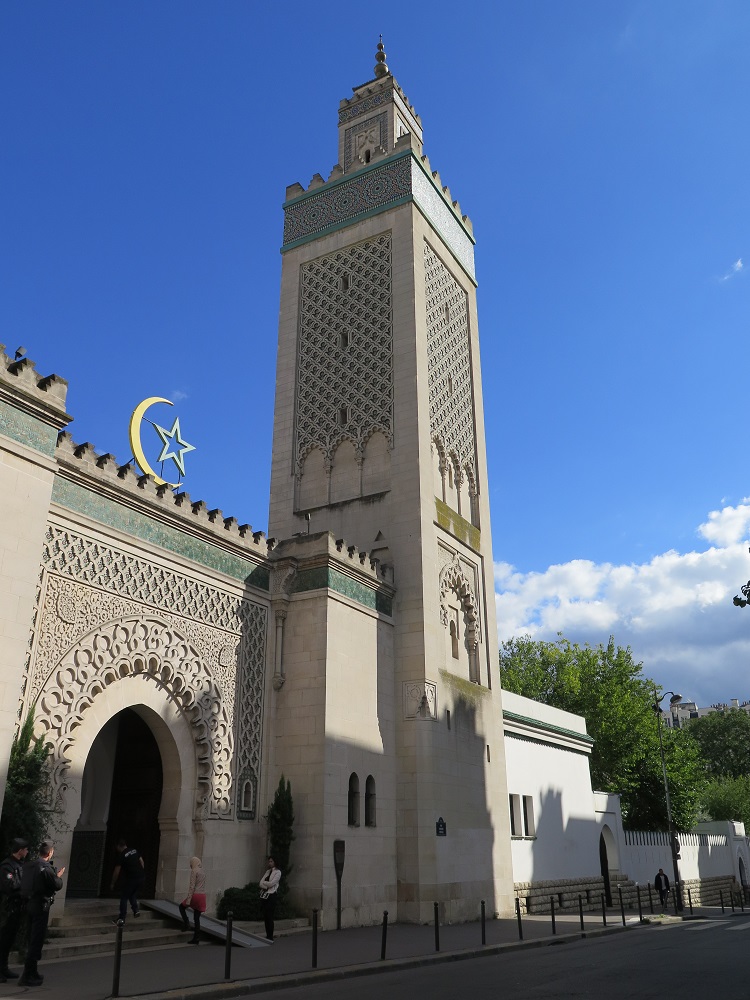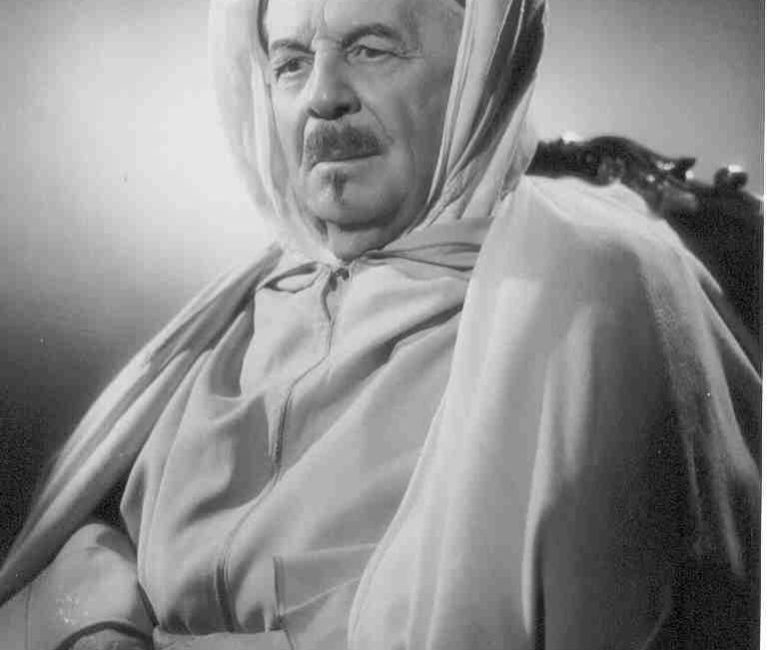Benghabrit: The Muslim Rector who saved Jews from the Gestapo
The Grand Mosque of Paris was built between 1922 and 1926 to symbolize the eternal friendship between France and Islam. It was also meant to express gratitude to the half-million Muslims of the French Empire’s North African colonies who had fought against the Germans in World War I. A hundred thousand Muslims died for France; without their sacrifice, it is said, the victory of Verdun would not have happened. The Mosque was particularly meant to honor the fallen Muslim tirailleurs (sharpshooters) from Algeria.
After the war many Algerians relocated to France, working in factories and on construction jobs mostly, sending money home to their families. Known as Kabyles—Berbers from Kabylia, the treacherous Atlas Mountains and impoverished villages of Algeria that Albert Camus wrote about — the Kabyles became the dominant Muslim population in Paris. Many lived in slum housing in Belleville in northeastern Paris, forming bonds with their other immigrant neighbors and coworkers: Chinese and Vietnamese, Tunisians, Moroccans, Jews from North Africa, Russia, eastern Europe.
When the Nazis invaded in 1940 and began rounding up Jews for deportation, many Kabyles joined the French Resistance. (It is also true that like Christians, many Arabs in North Africa and Paris collaborated with the anti-Semitic Vichy and German authorities.)
Benghabrit saves Jews from the Gestapo
The successes of the Kabyle Resistance were intimately connected with the clandestine antifascist operations in daily progress in the cellars of the Grand Mosque where the Kabyles worshipped. Thanks to the heroism of the Mosque’s rector, Si Kaddour Benghabrit (1868–1954), the Kabyles were free to bring their Jewish friends and coworkers to the Mosque for safe haven.
The first prayer offered at the Paris Mosque in 1926, in the presence of the president of France, was given by this rector who was also the Mosque’s founder. Benghabrit, born in Algeria, a cultured diplomat in Paris and North Africa who wrote books, enjoyed Parisian salon culture, and loved music became the most important Muslim in Paris and the most influential Arab in Europe. Benghabrit has now become a figure of historical interest and some acclaim because of his actions during the Holocaust.
When the Nazis and the Vichy government began arresting and deporting the Jews of Paris, Benghabrit committed himself and his congregation to making the Grand Mosque a sanctuary for endangered Jews. He devised a threefold rescue operation: first, he offered European and Algerian Jews shelter in the same apartments inhabited by Muslim families; second, he gave them fake identity certificates, to prove they were Muslims, not Jews; finally, he initiated the use of the cellars and tunnels beneath the Mosque as escape routes.
The Jews-in-hiding crawled and dug their way through the sewers and tunnels (souterrains) under the Mosque to the banks of the Seine where empty wine barges and boats operated by Kabyles were waiting to smuggle them out of Occupied Paris. Benghabrit was arrested and interrogated by the Gestapo a number of times as rumors of the Mosque’s resistance inevitably got out. A higher German command, however, ordered him released each time: The Germans could not risk Algerian riots in North Africa or Paris if the Reich was to hold North Africa against the allies. It was important that the Muslims on both fronts stayed submissive.
Salim Halali, a Berber Jew from Algeria, popular singer of North African songs and friend of Benghabrit, sought and found safety in the Mosque. The rector not only made him a Certificate of Conversion to show—falsely—that Salim’s grandfather had converted to Islam; he also had an unmarked tombstone in the Muslim cemetery in Bobigny inscribed with the family name of Halali’s grandfather.
After the Nazis checked it out, they left Halali alone. He lived out the war in the Mosque, passing as a Muslim when the Nazis, responding to rumors of a Mosque underground, barged in regularly on a search-and- deport mission. (Benghabrit had a warning bell hidden in the floor under his desk that alerted everyone of another Nazi raid in progress.) After the Liberation, Halali went on to become the most popular “oriental” singer in Europe. He and Benghabrit remained good friends.
Albert Assouline, a North African Jew who with a Muslim friend escaped from a POW camp in Germany, surfaced in Paris without identity papers. The Mosque welcomed him and his friend. While hiding out in the basement, Assouline saw many other Jews in hiding: the children lived in the upstairs apartments with Muslim families, the adults in the basement. Because North African Jews and Muslims looked alike, had similar surnames, were circumcised, and spoke Arabic, the Jews, with their fake Muslim identity certificates, were able to pass as Muslim when the Gestapo came searching for evidence of a Jewish sanctuary movement. After the war, Assouline gave testimony that he witnessed 1,600 Jews passing through the basements and sub-basements of the Mosque and descending into the dark labyrinthine tunnels, eventually making it out onto the boats waiting at the Halles aux Vins on the Seine to carry them to safety in the Maghreb and Spain. In addition to Jewish refugees, the Kabyle boatmen also carried messages between the French Resistance in Paris and the Free French Army in Algeria.

The Grand Mosque of Paris: Place du Puits de l’Ermite. Image is taken from the book The Streets of Paris
Some sources dispute Assouline’s estimate, claiming that at most five hundred Jews were given a home and then safe passage by Benghabrit and the Mosque. One Israeli scholar dismisses the story as exaggerated from start to finish. There is not much data available to provide the actual numbers of Jews rescued by the Mosque. But what there is—old newspapers, scholarly research,* and personal testimonies from Jews who after the war told of hiding for its duration in the Mosque’s basements—supports the details of this hidden history.
Benghabrit was given the Grand Croix de la Légion d’Honneur after the war. But Eva Wiesel has noted in The New York Times that getting Yad Vashem in Israel to grant the honorific of “Righteous Among Nations” to a Muslim, even the Oskar Schindler–like Benghabrit, is and will remain very difficult. This heroic unsung leader of the Paris Mosque Resistance died in 1954 in the early stages of the war of Algerian independence.
He is buried in the Mosque, facing in the direction of Mecca, as are all Muslims.
SUSAN CAHILL has published several travel books on France, Italy, and Ireland, including Hidden Gardens of Paris and The Streets of Paris. She is the editor of the bestselling Women and Fiction series and author of the novel Earth Angels. She spends a few months in Paris every year.
MARION RANOUX, a native Parisienne, is an experienced freelance photographer and translator into French of Czech literature.




